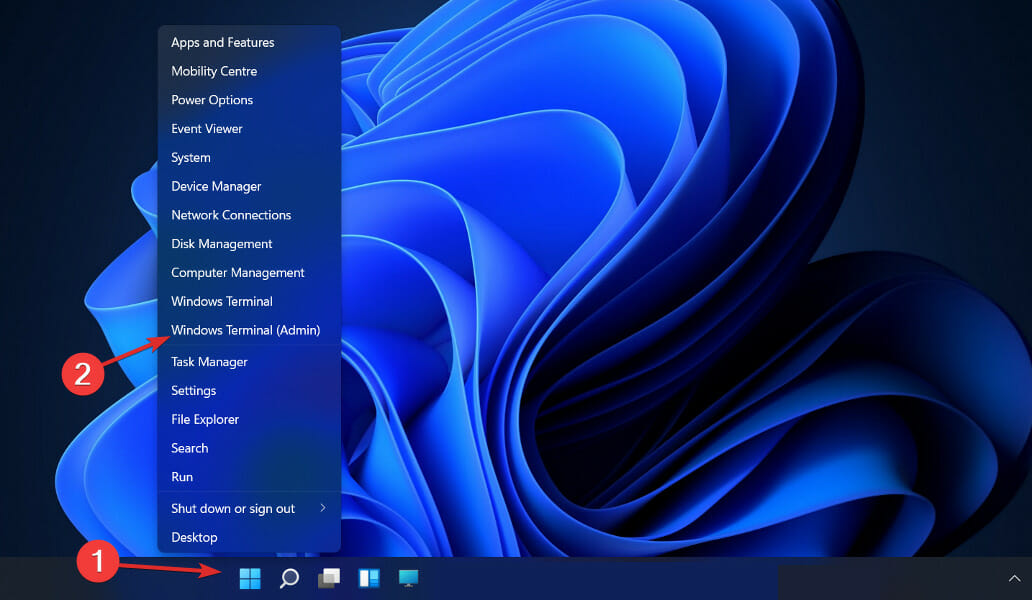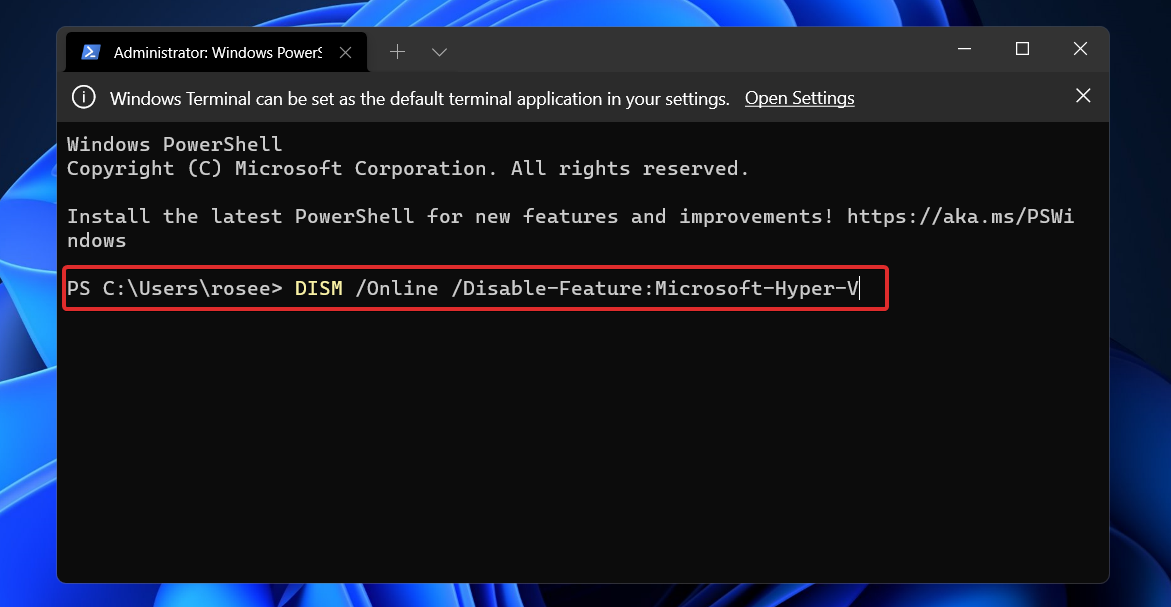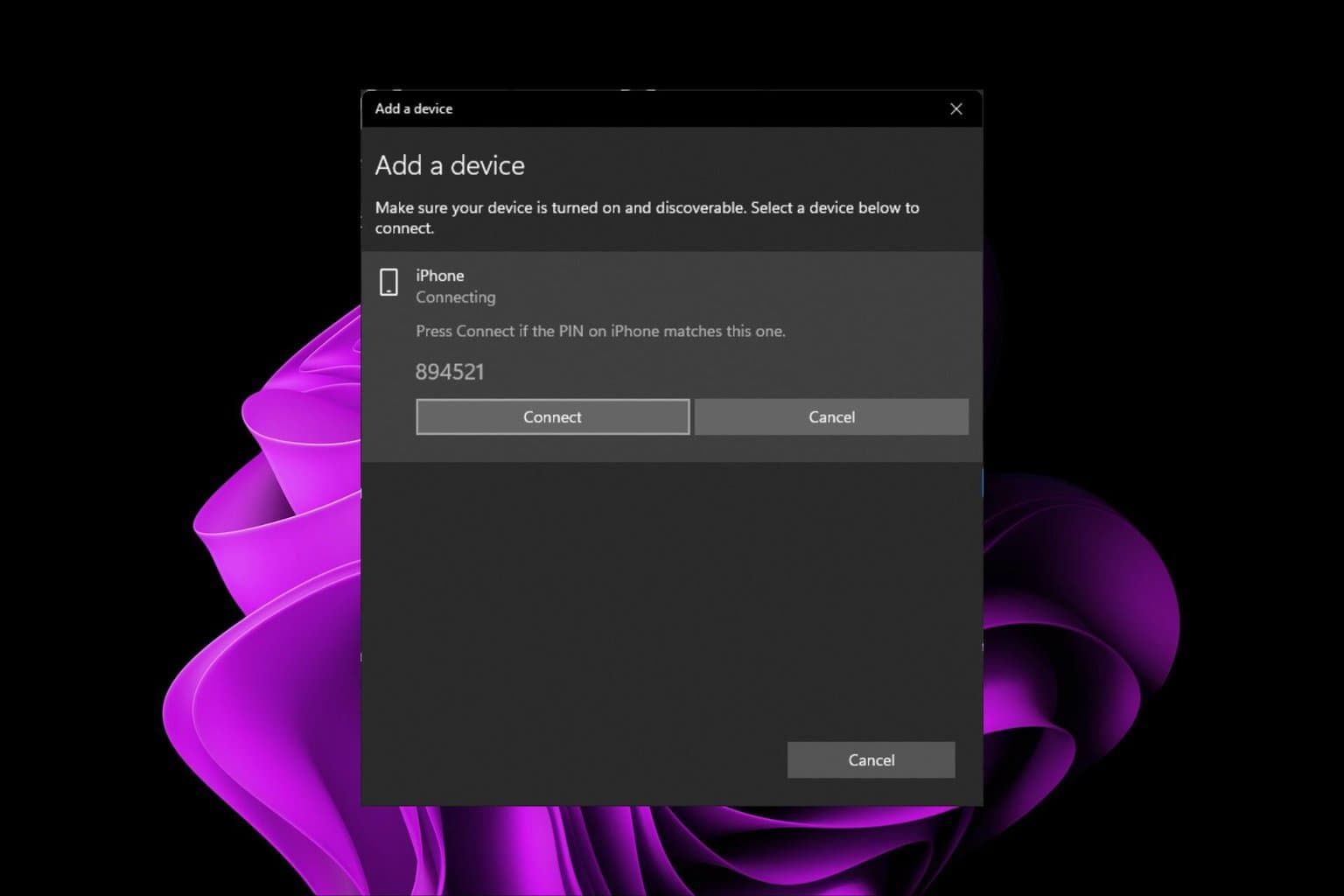How to Disable Hyper-V in Windows 11: Save CPU, Run Virtualization Software & More
Command-line tools allow you to get rid of Hyper-V in a few clicks
3 min. read
Updated on
Read our disclosure page to find out how can you help Windows Report sustain the editorial team. Read more

While Windows 11 has it enabled by default, many want to turn off Hyper-V to improve performance, resolve compatibility issues with other virtualization software, and free up system resources.
If that’s you, you can find below 3 easy ways to disable Hyper-V on your Windows 11 PC.
How can I disable Hyper-V in Windows 11?
1. Disable Hyper-V with Command Line
1. Press the Windows + S keys at the same time on your keyboard to open the Search bar.
2. Type cmd in the Search bar.
3. Right-click on the most relevant result and select Run an administrator from the list of options available.
4. The Command Prompt window will open.
5. Now type or paste in the following command:
DISM /Online /Disable-Feature /FeatureName:Microsoft-Hyper-V-All6. Press Enter to run the command.
7. Hyper-V is now disabled on your PC.
At the time, the available methods to disable Hyper-V are through command line-tools. Of course, the tool that users prefer to use is Command Prompt. So, if wanted to find out how to disable Hyper-V in Windows 11 Command Prompt, check the steps below.
2. Use PowerShell
- Right-click on the Start icon then click on the Windows Terminal (Admin) option to open the PowerShell interface.
- Type or paste in the following command, then press Enter and let it run:
DISM /Online /Disable-Feature /FeatureName:Microsoft-Hyper-V-All
3. Disable with DISM
- Right-click on the Start icon then click on the Windows Terminal (Admin) option.
- Now type or paste in the below command and press Enter to run it:
DISM /Online /Disable-Feature:Microsoft-Hyper-V
To finish the uninstallation procedure and entirely uninstall Hyper-V, a machine’s UEFI/BIOS settings must be configured to disable Secure Boot.
The technique for disabling Secure Boot will differ based on your hardware vendor and the manufacturer of your motherboard.
Does Windows 11 have a virtual machine?
Virtual machines enable developers to work with Windows without installing the operating system on their workstations.
In addition to working from devices running other operating systems, such as Linux or macOS, developers will be able to work from a Windows 11 Enterprise virtual OS. Users have a variety of alternatives when it comes to developing a virtual machine.
The virtual machine enables developers to start constructing Windows apps quickly. They can use the pre- installed feature with the newest versions of Windows, the developer tools, SDKs, and more.
Benefits of Hyper V
One of the reasons you want to enable Hyper-V in Windows 11 is the ability to run virtual machines in their own isolated space.
This allows us to run not only one but multiple virtual machines simultaneously, which is very convenient.
How much RAM does Hyper-V need?
Typically, memory is the most valuable resource available on a virtualization host. It is not possible to share it between virtual computers. The computing expenses associated with compressing or de-duplicate it are prohibitively high, making neither option practical.
Memory assignment and activity tracking in Hyper-V are not without their own set of drawbacks. Hyper-V alone requires approximately 300 MB of memory to run its operations.
For each virtual machine, any quantity of memory up to and including the first megabyte necessitates using 32 megabytes of overhead. Every gigabyte added after the first incurs an additional 8 megabytes overhead.
Because of this, you should expect your physical host to be unable to utilize the absolute bare minimum amount of RAM available for VMs, which is 1GB.
Furthermore, it is frequently noticed in practice that other activities in the management operating system require even more memory to be set aside than is initially required. A typical Hyper-V host will require approximately 2 GB of RAM solely to run Hyper-V and the management operating system.
Wrapping up
If you want to learn how to optimize your OS, check out our guide on how to make Windows 11 faster and more responsive.
And if you encounter issues while installing the feature, we have already prepared a post on what to do if you can’t install Hyper-V on your computer. The solutions will apply to Windows 11 as well!
Let us know in the comments section below which solution worked best for you.















User forum
0 messages